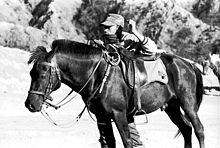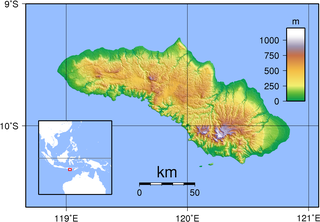
Sumba, natively also spelt as Humba or Hubba is an Indonesian island located in the Eastern Indonesia and administratively part of the East Nusa Tenggara provincial territory. Sumba has an area of 11,005.62 square kilometres, and the population was 686,113 at the 2010 Census and 779,049 at the 2020 Census; the official estimate as of mid-2022 was 799,771. To the northwest of Sumba is Sumbawa, to the northeast, across the Sumba Strait, is Flores, to the east, across the Savu Sea, is Timor, and to the south, across part of the Indian Ocean, is Australia.

Sumbawa is an Indonesian island, located in the middle of the Lesser Sunda Islands chain, with Lombok to the west, Flores to the east, and Sumba further to the southeast. Along with Lombok, it forms the province of West Nusa Tenggara, but there have been plans by the Indonesian government to split the island off into a separate province. Traditionally, the island is known as the source of sappanwood, as well as honey and sandalwood. Its savanna-like climate and vast grasslands are used to breed horses and cattle, as well as to hunt deer.

The Percheron is a breed of draft horse that originated in the Huisne river valley in western France, part of the former Perche province, from which the breed takes its name. Usually gray or black in color, Percherons are well-muscled, and known for their intelligence and willingness to work. Although their exact origins are unknown, the ancestors of the breed were present in the valley by the 17th century. They are believed to descend from war horses. Over time, they began to be used for pulling stagecoaches; and later, for agriculture and hauling heavy goods. In the late 18th and early 19th centuries, Arabian blood was added to the breed. Exports of Percherons from France rose exponentially in the late 19th century, and the first purely Percheron stud book was created in France in 1893.

The Pony of the Americas is a pony breed developed in the state of Iowa in the United States. The foundation stallion was an Arabian/Appaloosa/Shetland pony cross. A breed registry was founded in 1954, and within 15 years had registered 12,500 ponies. Today, the Pony of the Americas Club is one of the largest and most active youth-oriented horse breed registries in the US. Although called ponies, POAs have the phenotype of a small horse, combining mainly Arabian and American Quarter Horse attributes. The registry is open, allowing blood from many other breeds, but has strict criteria for entry, including Appaloosa coloration, specified height and other physical characteristics. Although mainly bred for Western riding, the breed has been used for many other disciplines, including driving, endurance riding and some English disciplines.

The Russian Don is a breed of horse developed in and named after the steppes region of Russia where the Don River flows. Utilized originally as cavalry horses for the Cossacks, they are currently used for under-saddle work and driving.

The Dole Gudbrandsdal, Dølahest, or Dole is a draft- and harness-type horse from Norway. The Dole Trotter is alternately considered a subtype of the Dole Gudbrandsdal and a separate breed; it is also considered a part of the coldblood trotter type. The Dole Gudbrandsdal is a small draft horse, known for its pulling power and agility, while the Dole Trotter is a smaller, faster horse used for harness racing; the two types are commonly interbred. Both types are strictly critiqued before entry into the studbook, which has over time resulted in an improvement in the breed type. The Dole is originally from the Gudbrandsdal Valley, and is probably descended in part from the Friesian horse. Over time, the breed has had Thoroughbred, Arabian, and other breeds added in, especially during the creation of the Dole Trotter in the 19th century. The first studbook was created in 1941, and the current breed association was formed in 1947. Although originally used mainly as a pack horse, today, the heavier Dole type is used mainly for agricultural purposes. The Dole Gudbrandsdal been crossed with other breeds to develop horses for harness racing and riding.
The Welara is a part-Arabian pony breed developed from the Arabian horse and the Welsh pony. It was originally bred in England by Lady Wentworth at the Crabbet Arabian Stud in the early 1900s from imported Arabian stallions and Welsh pony mares. Breeding then spread throughout North America. In 1981, a breed registry was formed in the United States, and a studbook began to be published. They are used for many disciplines of English riding, and are known for their refinement, hardiness and spirit.

The Bali pony is an ancient breed now living on the Indonesian island of Bali.
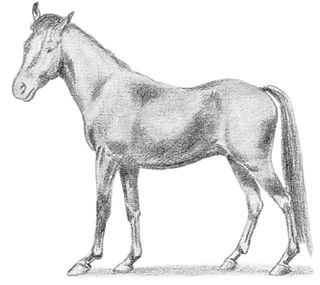
The Manipuri Pony is a traditional Indian breed of small horse or pony from Assam and Manipur in north-eastern India. It appears both in the history and the mythology of Manipur, and was used for warfare and polo. It is believed to have been the polo pony in use in Assam in the mid-nineteenth century when British tea planters first saw polo being played, and the height limits set for polo ponies were based on ponies of this breed. It was very numerous in the early twentieth century, but numbers have since fallen. A breed society was established in 1977, and a breed standard was drawn up by the Indigenous Horse Society of India in 2009.
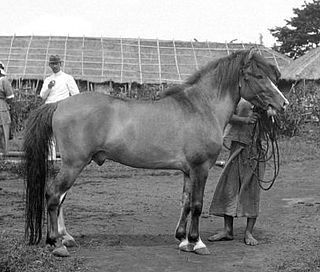
The Batak pony, also called the Deli pony, is a pony breed from Indonesia. Originating in Central Sumatra, it is thought to have descended from Mongolian Horse and Arabian blood, and has continually been infused with additional Arabian blood to improve its quality. The Batak is selectively breed by the Indonesians, and is often used to upgrade the quality of the horses and ponies on nearby islands.
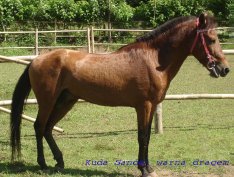
The Sandalwood Pony is a breed of small horse originating from Indonesia, on the Sumba and Sumbawa Islands. It is named after the Sandalwood trees, which are a major export of the country. The Sandalwood pony is one of the finest in the country, partly due to the great amount of Arabian blood. They make suitable children's ponies, and have been exported to Australia for this purpose. They have also been exported to other Southeast Asian countries for use as racing ponies.
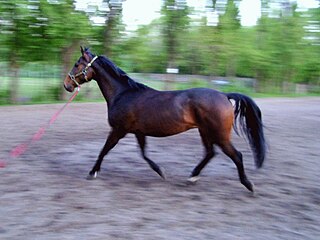
The Malopolski is a Polish horse breed developed in the 19th century in Lesser Poland, Polish Małopolska, hence the name. It is versatile breed, used today for light draft and under-saddle work. It was developed mainly from native Polish horses crossed with Thoroughbreds and Arabians, and a 2006 study shows a strong genetic presence of Thoroughbred bloodlines within the breed today. Population numbers have been in decline since the late 20th century, but genetic studies show little danger of inbreeding at this time.

The Italian Heavy Draft, or Rapid Heavy Draft, is a breed of draft horse from Italy. The full Italian name of the breed is Cavallo Agricolo Italiano da Tiro Pesante Rapido, "Italian Rapid Heavy Draft Farm Horse", and the abbreviation TPR ) is often used.

The Bardigiano is a breed of small horse from the Emilia Romagna region of Italy. It takes its name from the town of Bardi, in the Apennines of Parma, and is principally associated with the surrounding area and the Valle del Ceno. The mountain environment and steep, rough terrain of the area have contributed to produce a robust, hardy breed, agile and sure-footed over difficult ground. Although some males and all females are under 14.2 hands, the Bardigiano is always considered a horse in its home country. The stud book was established in 1977, and is held by the Associazione Provinciale Allevatori, the regional animal breeders' association, of Parma. The breed is widely distributed in Italy, with breeders in 26 Italian provinces; a recent study examined 3556 stud book entries for living horses. Due to these relatively large numbers, the breed is not considered to be at risk of extinction, but is classed as "vulnerable".
Tambora is a lost village and culture on Sumbawa Island buried by volcanic ash and pyroclastic flows from the massive 1815 eruption of Mount Tambora. The village had about 10,000 residents. Scientists unearthing the site have discovered ceramic pots, bronze bowls, glass bottles, and homes and villagers buried by ash in a manner similar to that of Pompeii. The language of the culture was wiped out. The language appears to have been an isolate, the last survivor of the pre-Austronesian languages of central Indonesia. The village was visited by western explorers shortly before its demise. It is believed to have traded with Indochina, as Tambora pottery resembles that found in Vietnam.

The Java pony is a breed of pony developed on the island of Java in Indonesia. It is thought to have descended from wild forebears of Mongolian Wild Horse ancestry. It is larger and stronger than the Timor pony, with more Arabian breed influence.
The Gayoe, also known as the kuda-Gayo, is a pony from the island of Sumatra, found near Aceh. The name is derived from the Gayoe hills in the north of the island.
Sandalwood is the common name of many species of plants and their wood and oils.

The Canadian Rustic Pony is a breed of pony that originated in Canada, particularly Saskatchewan and Manitoba. The pony is the result of a crossing between the Heck horse and Welsh pony-Arabian horse crosses.

The Lombok is a breed of horse found on the island of Lombok, Indonesia. Probably of Mongolian origin, this pony is influenced by horses from neighboring islands, notably Java, and is itself regularly exported to other Indonesian islands. With its height of around 1.22 m and high-legged design, the Lombok is closely related to the Macassar, a pony native to southern Sulawesi, of which it is sometimes considered a type. They are traditionally hitched to cidomo, small two-wheeled horse-drawn vehicles particularly common on the Gili Islands. They can pull heavy loads of building materials or beer. Numbers are fairly small, with around 5,000 recorded throughout Indonesia in 2003.
